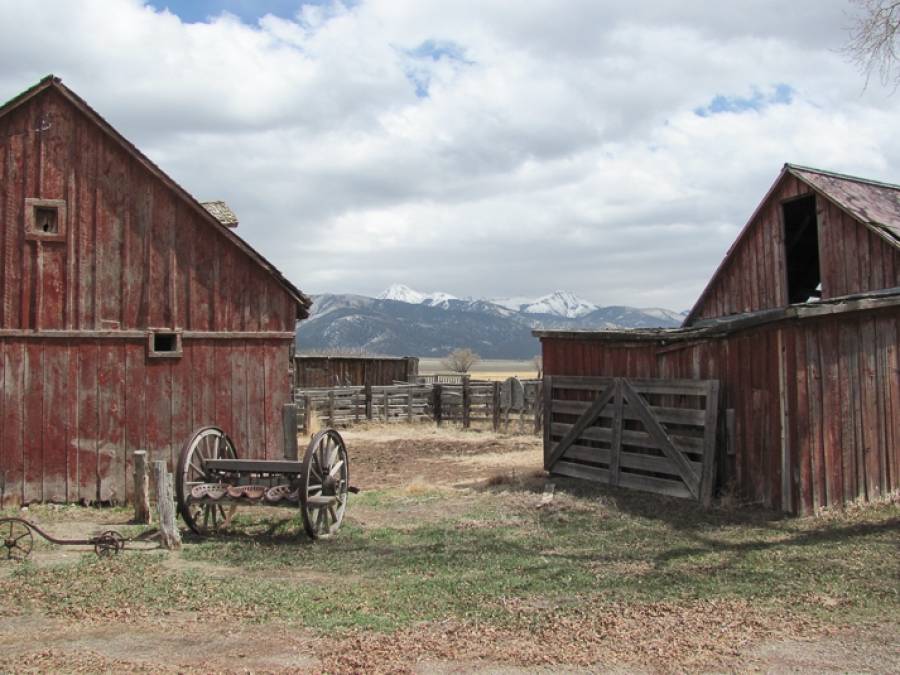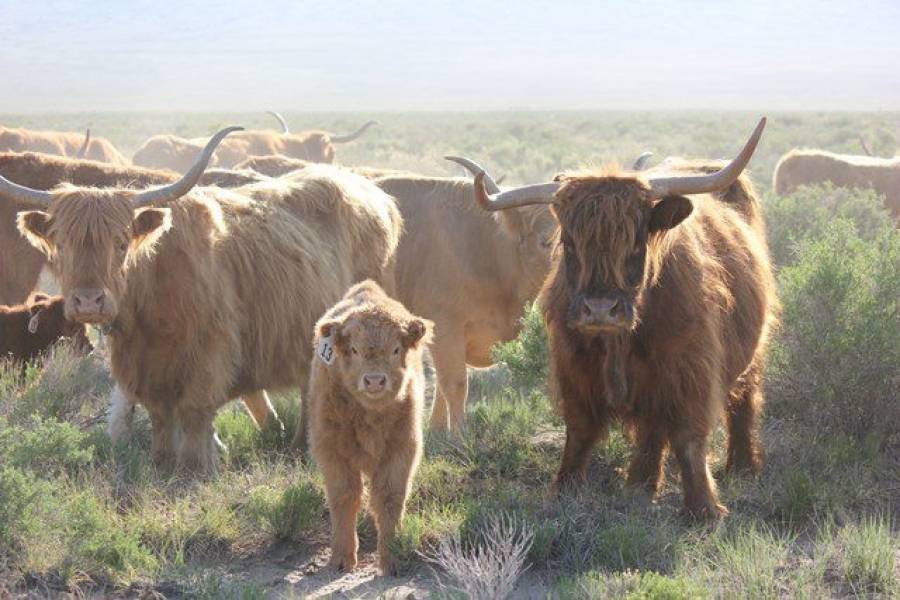Holistic Management is based on a decision making framework which results in ecologically regenerative, economically viable and socially sound management of grasslands.
Grasses across the earth developed with large herds of prey (ibex, yaks, bison, camels, elk, moose, and, yes, the ancestors of cows, goats, sheep, etc.), and their predators – wolves, lions, hyenas, etc. Think of the buffalo - the prey lived in large bunches, eating all plants down to a healthy level, pooping and peeing and working it all into the earth with their feet. When the predators came around, or they had eaten all the plants down to the stalks, the herd moved on quickly, in a tight herd, to start the process over again elsewhere. The result was healthy plants, roots and soils.
Today we have eradicated the large herds of wild prey and most of the predators. We have divided vast grasslands into plots of a few acres (even many acres) surrounded by fences. Animals are put out for many months, eating only the plants they like most, returning to the shoots, and eventually killing the plants. The result is that the most desirable plants die off, and the less desirable plants survive, leading to a more and more limited plant array, and loss of biomass above and below the soil surface. This in turn leads to unanchored soils, which we see blowing in the valley all the time. This method of grazing has created enormous damage to the northern San Luis valley. But we can change this, and at OLT we are doing just that.
More than just for feeding livestock, grasses are important for the wellbeing of the globe. They are, on a global scale, huge carbon sequesterers (hmmm, a word?). So, it's a good thing to optimize their health to optimize our health.
And the way to do that on a large scale is to help to bring back the model of predator-prey dynamics to our grasslands. A few issues, certainly. We have the prey, in the shape of food animals. However, as we have fenced the entire world, we can't just let the proverbial wolf loose because the prey animals would not be able to flee naturally. So what to do?
Among others, the Savory Institute (savoryinstitute.com), has been working all over the world for decades to help food producers mimic the prey-predator model of grasses revival to great success and acclaim. His premise is that even though it is not realistic to bring in predators, we can use cattle, goats, sheep, even pigs and chickens, to revive grasslands by stepping in and using holistic grazing management to take their place. The method is to put a lot of animals on a small area of land and move them quickly when they've eaten the grass down to a desired level and only bring them back when the grass is ready. That is done with lots of determination, work, and electric fence. The result is healthy roots, healthy soils that readily absorb and hinder evaporation of the sparse water, and healthy grasses of multiple species. This will not create immediate results. It will require hard work and dedication for years.
To that end, OLT has entered into a collaborative partnership with a local ranch, Arrowpoint Cattle Company (you might have eaten their delicious beef that we sell at OLT), which has been using this grazing method for years. We have also joined hands with the Savory Institute, Natural Resource Conservation Service, Bureau of Land Management, and our neighbors, Richard and Linda, to bring this effective process to the Everson Ranch, Richard and Linda's lands, and OLT's BLM grazing allotments, in order to bring our grasslands back.
Arrowpoint's cattle are Scottish Highland, small, drought and harsh weather resistant beauties that are trained to a whistle and a kind word - okay, and maybe some cow cookies. We have a total of around 120 cattle on the Ranch.
OLT has always had cattle on the Everson Ranch. The difference now is that we are practicing natural resource enhancement as opposed to commodities resource extraction.
So come help us celebrate our commitment to the preservation of OLT's beautiful lands and helping to build a model of sustainable agriculture so ranchers in the Northern San Luis Valley can continue to ranch and preserve our beautiful open spaces!

